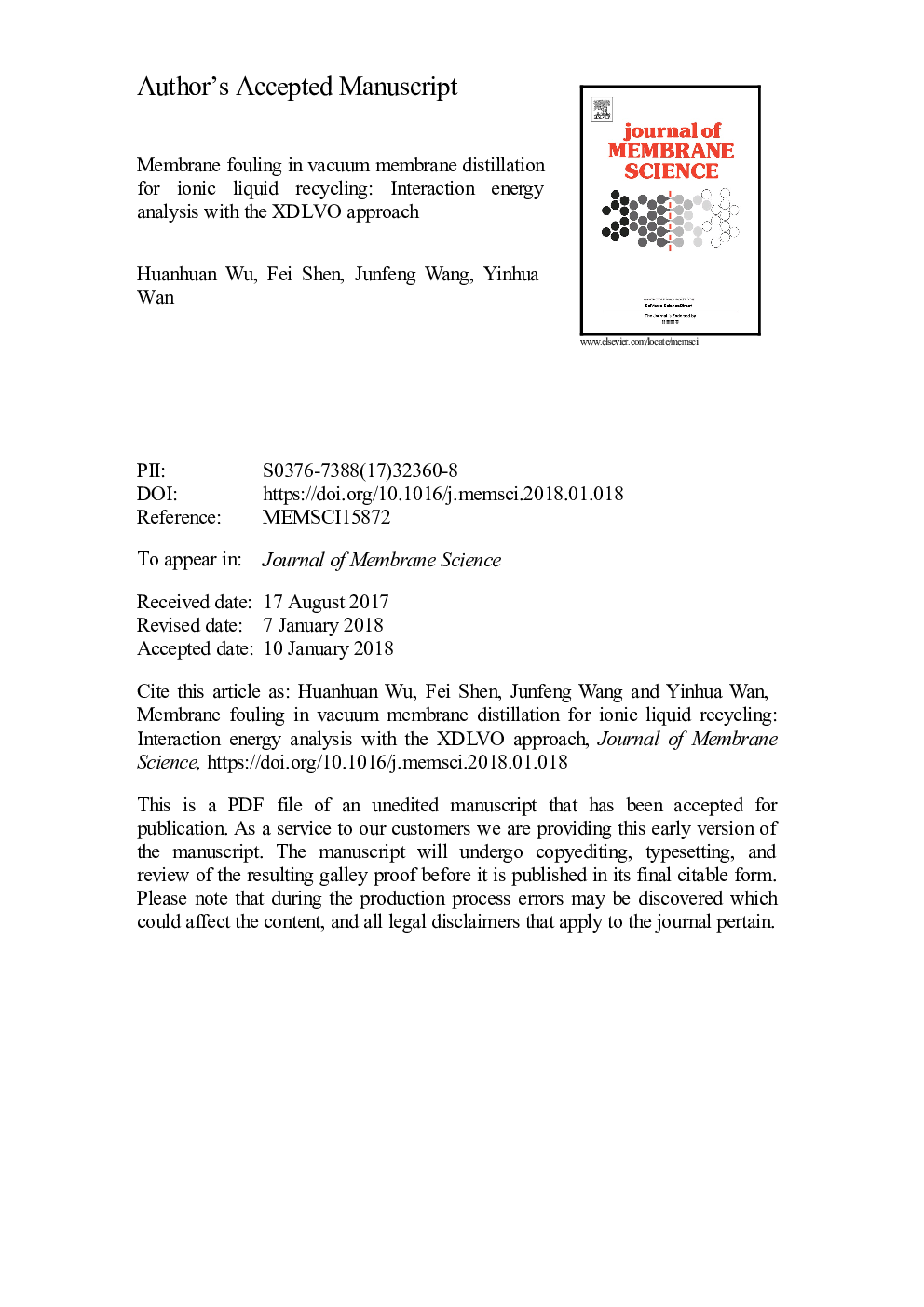| Article ID | Journal | Published Year | Pages | File Type |
|---|---|---|---|---|
| 7020165 | Journal of Membrane Science | 2018 | 31 Pages |
Abstract
Membrane fouling, essentially originated from the interactions between foulant and membrane surface, is a big obstacle to use membrane distillation (MD) for ionic liquid recycling from its aqueous solution. By applying the extended Derjaguin-Landau-Verwey-Overbeek (XDLVO) approach and surface element integration method, this study mainly investigated the fouling behavior of three kinds of hydrophobic membranes during the vacuum MD (VMD) separation of 1-butyl-3-methylimidazolium chloride ([Bmim]Cl) solutions. Effects of membrane surface chemical properties (e.g. elemental composition and zeta potential), membrane surface morphology (e.g. roughness), and [Bmim]Cl concentration on the interaction energy between [Bmim]Cl and membrane surface were studied. The results showed that the Lifshitz-van der Waals (LW) and electrostatic interaction (EL) components were positive (repulsion), while the acid-base (AB) interaction component was negative (attraction). Roughening membrane surface significantly decreased the interaction energy barrier, indicating a greater risk of being fouled. Even so, membrane surface chemical properties had more important impact on membrane fouling than surface morphology. Energy barrier would be also reduced when [Bmim]Cl concentration increased, signifying a severer membrane fouling potential in a concentration process. These results were expected to help to understand ILs-fouling mechanism in VMD process and guide the selection and fabrication of promising membrane for ILs recovery.
Related Topics
Physical Sciences and Engineering
Chemical Engineering
Filtration and Separation
Authors
Huanhuan Wu, Fei Shen, Junfeng Wang, Yinhua Wan,
